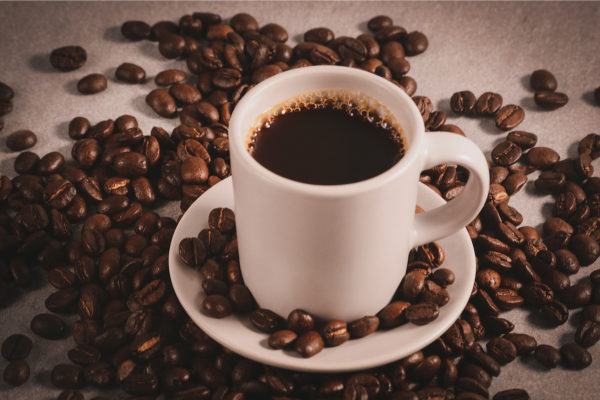Brewing the perfect cup of coffee at home is both a science and an art. Whether you’re just starting or looking to fine-tune your brewing routine, understanding the key elements of preparation can take your coffee from average to exceptional.
In this guide, you’ll learn how to master the core factors that influence flavor—so you can enjoy a consistently great cup without needing expensive equipment or barista training.
What Makes Coffee Taste Great?
A delicious cup of coffee is the result of a balanced combination of the following elements:
- Fresh, high-quality beans
- Proper grind size
- Accurate brewing time
- Correct water temperature
- Clean equipment
Understanding how each of these elements affects the final cup is essential if you want to control and enhance your brewing results.
Start With Fresh, High-Quality Beans
The foundation of great coffee is fresh, well-roasted beans. Here’s how to make the right choices:
- Buy whole beans instead of pre-ground coffee
- Choose freshly roasted beans (ideally with a roast date)
- Pick a roast level based on your taste (light, medium, dark)
- Opt for specialty coffee when possible—it often comes from better sources and is roasted more carefully
Store your beans in an airtight, opaque container in a cool, dry place to maintain freshness.
Choose the Right Brewing Method
Each brewing method highlights different flavors and textures. Consider your preferred taste profile:
- Drip machine: Convenient, consistent
- French press: Full-bodied, rich
- Pour-over (like V60 or Chemex): Clean, bright flavors
- AeroPress: Versatile and quick
- Espresso machine: Concentrated and intense
Start with one method and learn it well before experimenting with others.
Measure Your Coffee and Water
Precision is key to a balanced cup. The standard coffee-to-water ratio is:
- 1 gram of coffee for every 15–18 grams (or ml) of water
A simple guide: for a 350 ml (12 oz) cup, use around 20–23 grams of coffee.
Use a digital scale for accuracy, especially if you’re using a manual method like pour-over or French press. Scoops and spoons vary too much in volume.
Grind Your Coffee to Match the Brew Method
The size of your coffee grounds directly impacts how water extracts flavor. Use the correct grind size:
- French press: Coarse
- Drip coffee maker: Medium
- Pour-over: Medium-fine
- Espresso: Fine
- AeroPress: Medium-fine to fine (varies by recipe)
A burr grinder gives more consistent results than a blade grinder and is worth the investment for better control.
Use Clean, Filtered Water at the Right Temperature
Coffee is 98% water—so the quality of your water matters.
- Use filtered or bottled water if your tap water tastes bad
- Ideal temperature: 90–96°C (195–205°F)
- Avoid boiling water (it burns the coffee) or water that’s too cool (it under-extracts)
If you don’t have a thermometer, let boiling water rest for 30 seconds before pouring.
Master the Brewing Process
Let’s break down a basic pour-over brew (which can be adapted for other methods):
- Heat your water to the proper temperature
- Grind your coffee fresh just before brewing
- Place the filter in the dripper and rinse it with hot water (to remove paper taste and preheat the device)
- Add coffee grounds and gently shake to level
- Start your timer
- Bloom the coffee by pouring just enough water to wet all the grounds (wait 30–45 seconds)
- Continue pouring slowly in a spiral pattern until you reach your desired volume
- Let it drain completely, remove the filter, and enjoy
Total brew time should be around 3–4 minutes depending on your grind and recipe.
Taste and Adjust
Tasting your coffee critically will help you identify what to tweak next time.
- Too bitter: Coffee was over-extracted (grind too fine, brewed too long, water too hot)
- Too sour or weak: Under-extracted (grind too coarse, short brew time, water too cool)
- Flat or dull: Old beans or improper storage
Make one adjustment at a time—like grind size or ratio—so you can isolate the effect.
Keep Your Equipment Clean
Residual oils and old grounds can ruin flavor. Rinse and wash all brewing parts after each use, and deep clean your gear weekly to keep it performing well and delivering pure taste.
Don’t Forget the Cup
Even your coffee cup can influence flavor and enjoyment. Preheat your mug with hot water before pouring to maintain temperature. Avoid using cups that retain soap or odors.
Build Your Brewing Ritual
Perfecting your cup of coffee is about more than just flavor. Creating a morning ritual—measuring beans, heating water, taking a moment to brew—can be grounding, meditative, and joyful.
Experiment with different beans, origins, and techniques over time. Each cup becomes a small journey, a personal craft.
Final Thoughts: Make Coffee Personal
There’s no one-size-fits-all approach to brewing the perfect cup. What matters most is that the process—and the result—brings you satisfaction.
Whether you’re chasing café-level espresso or just want a better morning brew, applying these principles will elevate your coffee and deepen your appreciation for the drink you love.

